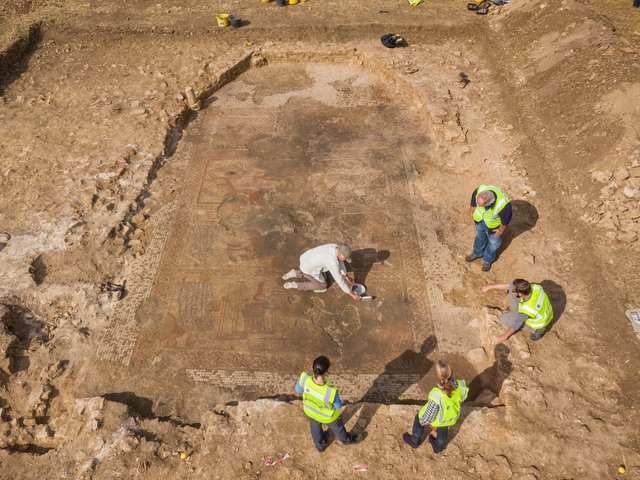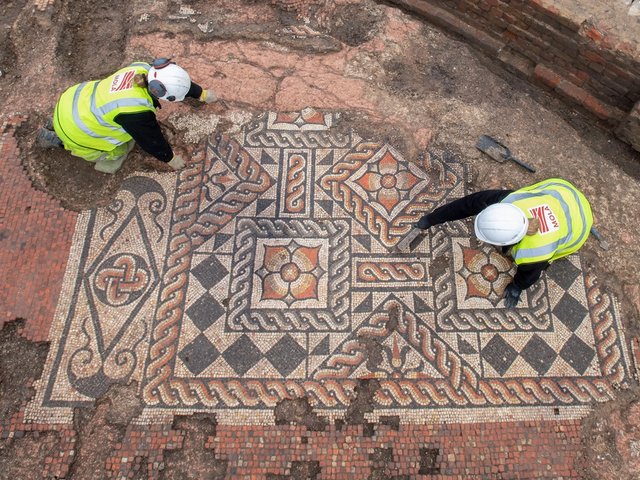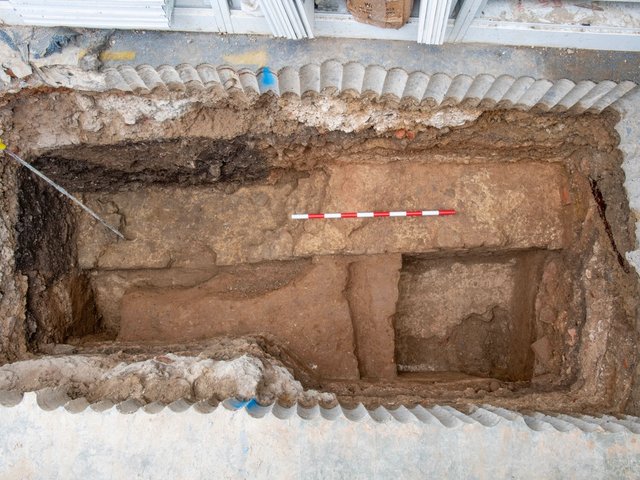The name of an interior decorator who died almost 2,000 years ago may yet emerge from a huge jigsaw of fragments of painted Roman plaster discovered in Southwark, just south of the Thames in London. One of the pieces, part of one of the largest hauls of painted plaster ever found in the capital, bears the word “fecit”—“made by”—and the archaeologists still hope to find the other half with the name of the artist. The link to an individual artist is a unique find in Britain.
The same location, the Liberty site in the shadow of the Shard tower, which is being developed by Landsec and excavated by the Museum of London Archaeology (MOLA), has already yielded spectacular finds. A magnificent mosaic and a mausoleum were among earlier discoveries, but the 120 boxes of broken plaster took a while to reveal their secrets.
The evidence suggests that the site was home to a luxury dwelling built very early in the Roman period, between AD43 - 150, which was decorated by teams of painters. These painters would appear to have been aware of continental fashions, including the rare use of a beautiful sunflower yellow only seen on a handful of other British sites, and applied above a dado painted to resemble costly Egyptian purple porphyry stone.
However, despite this likely costly and time consuming work, by AD 200 the building had been demolished, and the thousands of scraps of plaster dumped in a pit.
Han Li, MOLA’s senior building material specialist, who has led the epic task of piecing together the giant puzzle, described it as a once in a lifetime moment. “I felt a mix of excitement and nervousness when I started to lay the plaster out,” he says. “Many of the fragments were very delicate and pieces from different walls had been jumbled together when the building was demolished, so it was like assembling the world’s most difficult jigsaw puzzle.“
Li recruited other specialists including the British School at Rome, and Ian Betts, an internationally renowned expert on Roman building materials. “The result was seeing wall paintings that even individuals of the late Roman period in London would not have seen,” the archaeologist explains.
Some of the fragments had delicate decorations including flowers, fruit, birds, and musical instruments including lyres, but others had ancient graffiti including a near complete Greek alphabet. The latter is another unique find in Britain, and was so neatly done that experts think it had some practical use as seen in examples in Italy, rather than somebody scribbling their homework on the wall. Another graffito features a crying woman with a contemporary hairstyle.
Work continues on sorting and cataloguing the fragments, and it is hoped some will go on temporary or permanent display.






